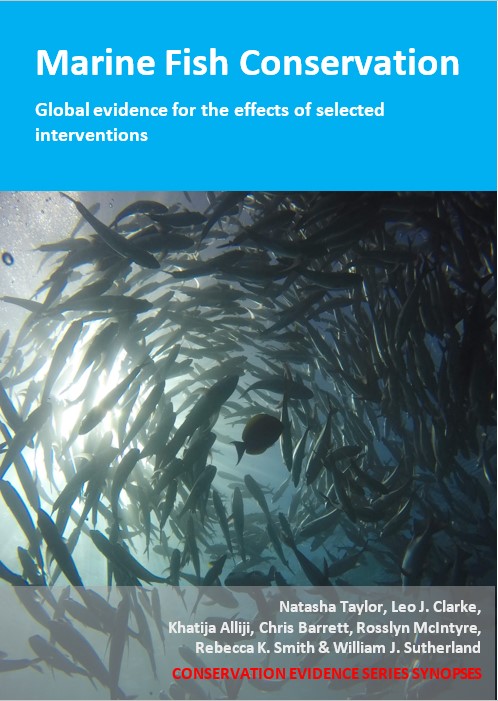Use an electric (pulse) trawl
-
Overall effectiveness category Awaiting assessment
-
Number of studies: 3
View assessment score
Hide assessment score
How is the evidence assessed?
-
Effectiveness
not assessed -
Certainty
not assessed -
Harms
not assessed
Study locations
Supporting evidence from individual studies
A replicated, paired, controlled study in 2000 of an area of seabed in the North Sea, off Belgium (Polet et al. 2005) found that electric pulse trawls targeting brown shrimp Crangon crangon reduced the amount of some unwanted and undersized fish caught compared to standard trawls. Of 12 comparisons, catches of undersized commercial fish were lower in pulse trawls than in standard trawls for whiting Merlangius merlangus in four (58–69% lower), sole Solea solea in two (41–60%), plaice Pleuronectes platessa in five (40–80%) and dab Limanda limanda in two comparisons (61–65%). Lower catches in pulse trawls were also reported in non-commercial tub gurnard Trigla lucerna (one of three comparisons), pogge Agonus cataphractus (three of 12 comparisons), dragonet Callionymus spp. (two of 10 comparisons) and goby Pomatoschistus spp. (six of 12 comparisons). Catches of six other non-commercial species were similar in both trawl designs. Catches of legal-sized commercial fish were typically similar in pulse trawls and standard trawls, except for lower catches of flounder Platichthys flesus (29–37%) and dab (17%) in one and two of 12 comparisons respectively. In addition, undersized shrimp catches were reduced in 11 of 15 cases. In 2000, experimental fishing was undertaken on the Flemish Banks off the Belgian coast using two beam trawls simultaneously, a standard trawl and an experimental electric pulse trawl, with pulse generators fitted to the beam of the trawl in one of two array configurations. Fifty-seven hauls were completed with the experimental trawl being towed on one side of the vessel and the standard trawl on the other. Full details of trawl design and generator configurations are provided in the original study.
Study and other actions testedA replicated, paired, controlled study in 2011 in an area of seabed in the North Sea, Netherlands (van Marlen et al. 2014) found that fishing for flatfish using an electric pulse trawl reduced the catches of discarded fish and undersized plaice Pleuronectes platessa and sole Solea solea compared to a conventional beam trawl. Average catch rate of all discarded fish (mainly bottom dwelling species – see paper for data for individual species/groups) was reduced by 57% in the pulse trawl (108 fish/ha) compared to the beam trawl (62 fish/ha). Fewer individuals of smaller sizes of the target species plaice and sole were caught in the pulse trawl than the beam trawl (data reported graphically). Data were collected in May 2011 from 126 trawl by three vessels fishing near each other. Two vessels used different types of pulse equipment (data pooled) and the other was a conventional tickler chain beam trawl (see original paper for specifications). Discarded catch was sampled from 33 hauls from each vessel.
Study and other actions testedA review in 2015 of electrotrawling activity in the North Sea (Soetaert et al. 2015) found that electric pulse trawls reduced unwanted catch, but some damage occurred to fish compared to standard trawls. Unwanted catch was lower in pulse trawls in three cases (30–50% less) and catches of commercial sole were lower in one case (13–22%), compared to using tickler chains. In two cases where electric pulses were used, one in Belgium and one in the United Kingdom, catches of small unwanted sole Solea solea and other small flatfish were lower compared to standard trawls. Cod Gadus morhua, but not lesser-spotted dogfish Scyliorhinus canicula, suffered spinal fractures, other injuries and death at all sizes in one case and only at adult sizes in one case, when fish were close to electric fields (injuries 9–70%, death up to 30%). The review summarised the development of electrofishing using trawls in European waters. Controlled studies (field and laboratory) of the effects of electrofishing on fish were also reviewed.
Study and other actions tested
Where has this evidence come from?
List of journals searched by synopsis
All the journals searched for all synopses
This Action forms part of the Action Synopsis:
Marine Fish Conservation





)_2023.JPG)














